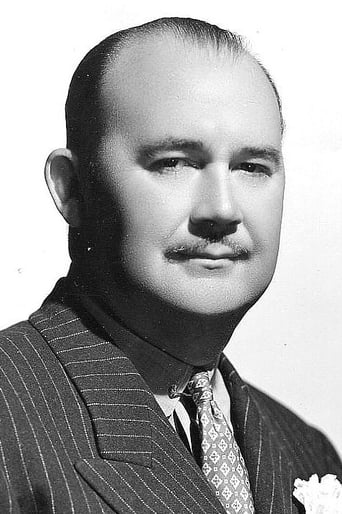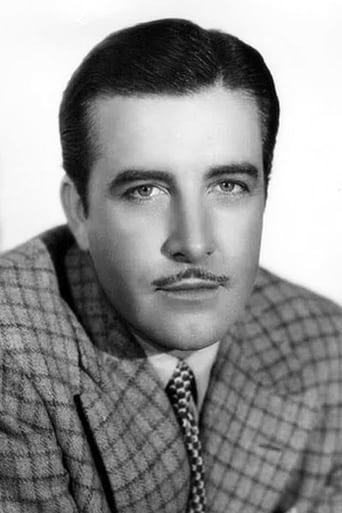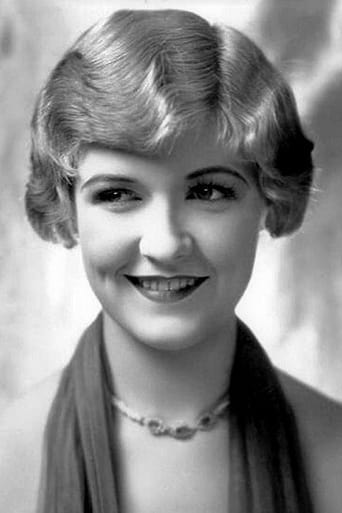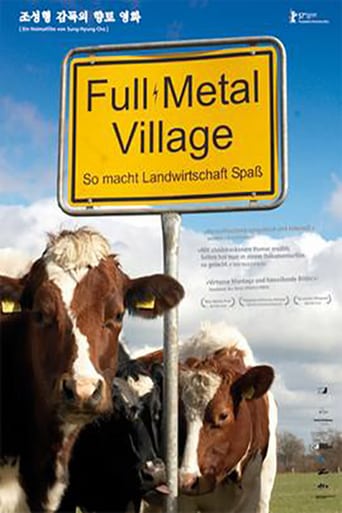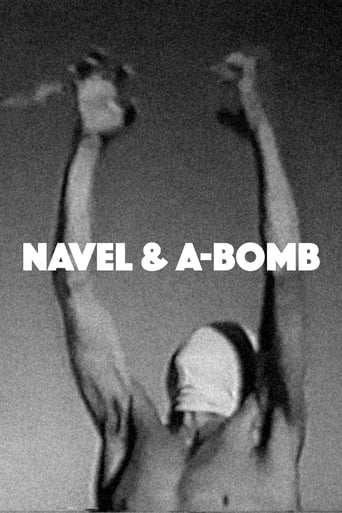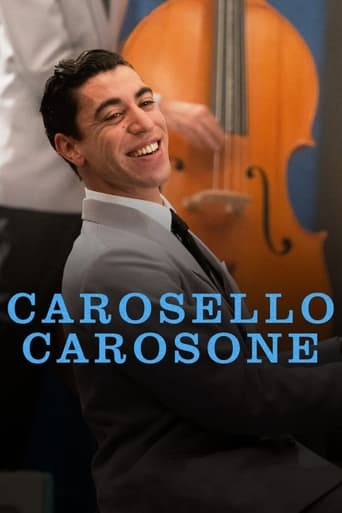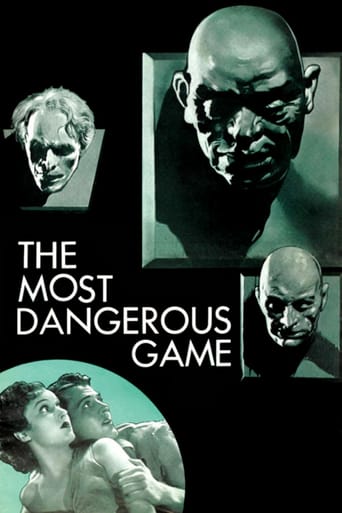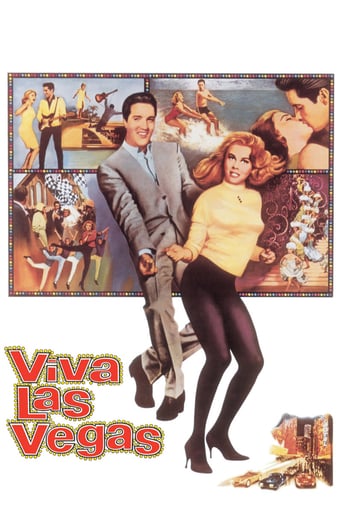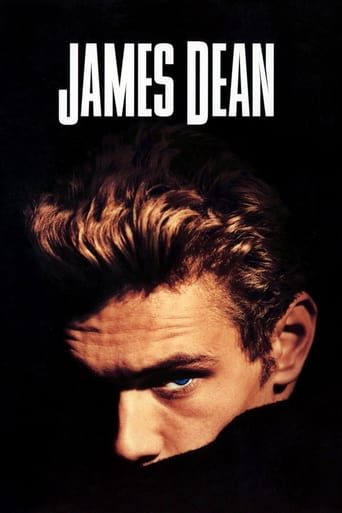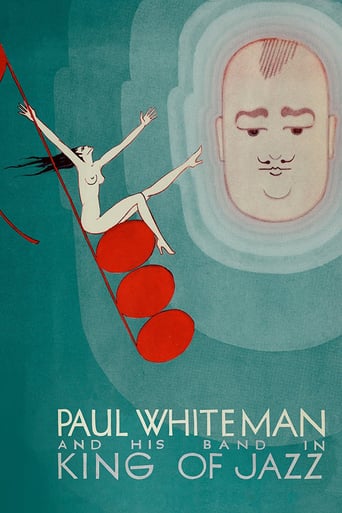
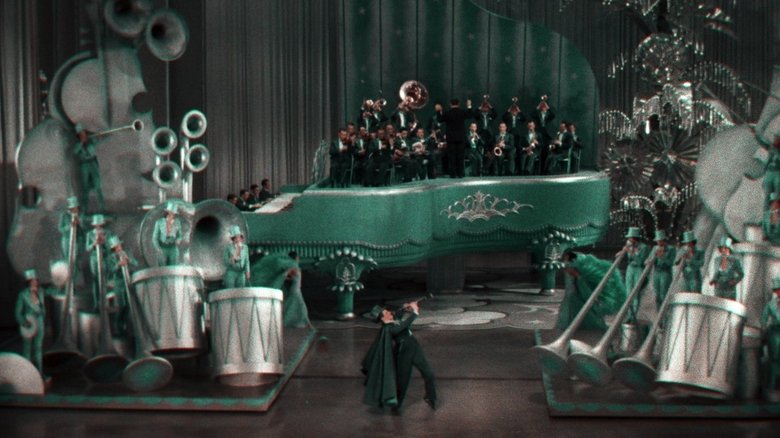
King of Jazz (1930)
Made during the early years of the movie musical, this exuberant revue was one of the most extravagant, eclectic, and technically ambitious Hollywood productions of its day. Starring the bandleader Paul Whiteman, then widely celebrated as the King of Jazz, the film drew from Broadway variety shows to present a spectacular array of sketches, performances by such acts as the Rhythm Boys (featuring a young Bing Crosby), and orchestral numbers—all lavishly staged by veteran theater director John Murray Anderson.
Watch Trailer
Cast


Similar titles
Reviews
Not only is this extravagant, $2 million Musical/Comedy production from 1930 a real sweet treat of vintage movie-making - But - As an added bonus - You'll actually get to see the very first filmed sequence of "moonwalking" (55 years before late pop-icon, Michael Jackson popularized it).Yes. Indeed. "The King of Jazz" is pure "Depression-Era" escapism that's all glitz and glamour from start to finish.I was certainly quite surprised to find out that upon this picture's initial release (with its added novelty of being filmed in 2-tone Technicolor) - It actually bombed, big-time, at the box-office.
Fortunately, the history of jazz was little troubled by this farcical musical travesty. The one black person... (did you know that it was people of color who created Jazz, innovated and sustained it decade after decade only to be constantly supplanted by less talented and creative whites who popularized their music and made millions off it?)... who appears is a cute little girl sitting on the lap of Paul White-Man, the purported king of jazz in a brief segment. The only jazzy number in the film is 'Happy Shoes' with the entire remainder of the film devoted to middle of the road popular schmaltz music and pseudo-classical Gershwin. That said, the film, however distasteful, dated and unfunny, is in some ways an important historical predecessor of the Hollywood musicals to come.I had read that the production numbers were something to see, but by the end I no longer cared. Not so hot. Comedy, very poor. Female vocals, very poor. White-man and his vaudevillians, crap. Bing Crosby, as usual, quite good.
Paul Whiteman was a huge star in the 20s with his terrific jazz band. He might have been the original star band leader. In "The King of Jazz" he also shows himself to be a decent comic actor as well. He's best remembered for his recording of Gershwin's "Rhapsody in Blue," which is featured in this early revue film."King of Jazz" is solid entertainment with some lavish and grand-scale production numbers that boast Bing Crosby, John Boles, Laura LaPlante, the Brox Sisters, Jeanie Lang, and of course Whiteman's band.Best songs are "Happy Feet," "A Bench in the Park," "The Song of the Dawn," and a jazzy "Bluebirds and Blackbirds" number with Crosby as one of the Rhythm Boys (with Harry Barris and Al Rinker).Al Norman does an amazing dance number to "Happy Feet." Jeanette Loff is rather bland in the "bridal veil" number. The Sisters G in their Louise Brooks hairdos are OK in their dance numbers. And there's a lot of short comedy bits that feature Walter Brennan, Slim Summerville, Grace Hayes, Merna Kennedy, William Kent, and others.Although I still prefer "The Hollywood Revue of 1929" this revue is also excellent in its use of lavish production numbers, color, and special effects. For fans of early musicals this one is not to be missed.Whiteman, Crosby, and Boles are all great.
"The King Of Jazz" 1930, is a wonderful example of just what the movies could do in the late 20's early 30's if they put their mind to it. The technical achievement is extremely high, for a film of this period, and one wonders at how cinema audiences of 1930 must have been amazed by this picture. It is photographed in a system called "Two Strip Technicolor". (Full 3-strip Technicolor would not be invented until 1932). The 2-strip Technicolor system managed to capture Red and Green, but not blue. To get around this they would use dyes that were a kind of orange/red and aqua-marine/green to trick audiences into thinking there was blue on screen.In this movie the "Rhapsody in Blue" number is very convincing.There is no plot to "The King Of Jazz", it is just one mammoth musical number after another, and that adds to its unique charm. My three favourite numbers are "Ragamuffin Romeo", "It Happened In Monterey", and "My Bridal Veil".The "Bridal Veil" number utilizes one of the biggest indoor sets I have ever seen. A lot of money was spent on this picture, and it shows. The Bridal Veil itself looks to be about 100 feet long and the bride needs about 40 bridesmaids to help hold it up.The print that is currently in circulation of "The King Of Jazz" is sadly not in 100% excellent condition. It seems to be made up of pristine sections of print, and battered and scratched dupes. Its a real patchwork version that is probably in need of some restoration work. The title sequence, (with vocals over the titles by Bing Crosby singing "Music Hath Charms") is very clear and in good shape, but then halfway through cuts to an extremely battered dupe copy? The same occurrence happens during the "It Happened In Monterey" number, and also "Bench In The Park", we are given a beautiful print with rich colours and rock steady picture stability, only to cut variously to scratched beaten dupes. I cannot understand why certain sections of the film were preserved but others were not. I am eagerly awaiting the DVD release of this unique and wonderful film and hope it wont be too long before it gets its well deserved release. There don't seem to be any plans as yet and the only way to see this movie is on television or VHS. This is a true lost opportunity to DVD producers because the film has many wonderful Bing Crosby numbers in it and would be very popular with Bing's fans.


